Revisiting progressive intellectuals, radical feminists of the 70s’ Pakistan
Forty artists depict how they see the 'revolutionary' age of the country

Forty artists participated in an exhibition organised about the 1970s. It was held at the Amin Gulgee Gallery and will run till March 20. PHOTO: AYESHA MIR/EXPRESS
The booming trend of the theatre, queens of Kathak dance, cafes where intellectuals would sit and talk at length, the bitter-sweet smell of alcohol encompassing the patrons of Karachi’s numerous bars; the dance floors, the progressive students' politics and the radical feminists who would set ablaze their dupattas in public during protests are some of the memories of those who either witnessed them or inherited them from their elders.
To accurately depict and celebrate all that was and has withered away with time, various artists have assembled their transcendental masterpieces at the Amin Gulgee Gallery, Clifton Karachi.
Showcasing the works of over 40 artists, the exhibition titled ‘The 70s Pakistan’s Radioactive Decade’ opened on March 16, providing a peek into the 'radical' 70s.
Painting exhibition: Artists urged to learn using imagination
On entering the exhibition site, the first artwork to welcome visitors is a live portrayal of the public environment of the 70s: two young men, clad in kurta pyjama, sit around a table, smoking, drinking red wine and conversing.
 PHOTO: AYESHA MIR
PHOTO: AYESHA MIRInside the gallery, a myriad of art pieces, and theatrical works await for those whose memory of the 70s era need some aesthetic refreshment.
Laal salaam
The gallery is packed and bustling, when you are suddenly greeted with a loud and startling “Comrade! Laal Salaam (Comrade! red salute).” Clad in fatigues, artist Wajdan Shah tries to catch the attention of visitors through his ‘revolutionary' gesture while handing out a chit inscribed with a Sindh verse penned by Shah Abdul Latif Bhittai.
“Comrades in Sindh are still there, like they used to be in 70s. Socialism is still relevant and is used to improve the lives of toiling masses,” Shah says.
 PHOTO: AYESHA MIR
PHOTO: AYESHA MIR
A visual metaphor
Filmmaker Jamil Dehlavi’s artwork may have bewildered many as it depicted a moving portrait of Zuljanah – the sacred stallion of Imam Hussain, the grandson of Prophet Muhammad (pbuh). The beautiful white stallion is shown rising out of the earth to seek a new rider and continue the struggle against oppression.
“It is a scene from my film Blood of Hussain which was made in the 70s. It was a transposition work used to relate the dictatorship era of Pakistan with Karbala,” Dehlavi says.
 PHOTO: AYESHA MIR
PHOTO: AYESHA MIR PHOTO: AYESHA MIR
PHOTO: AYESHA MIRWhen asked about the story behind his artwork, Dehlavi said: "It's a visual metaphor created with images from my film Blood of Hussain which I made in the 70s. The film was banned by General Zia-ul-Haq's government as it draws parallels between the epic of Karbala and resistance to a fictional military coup."
In another corner, a portrait of Zia titled ‘Zinda hai Zia’ by Hasnat Mehmood, depicted the dictator reading a ‘script’ as he announced the implementation of Martial Law.
Back to history: Art exhibition honours Jinnah’s life, sacrifices
Performance art
Other works included artists Sarah Pagganwala in a bridal outfit, sitting atop a chair elevated in the air, seemingly commenting on the desolation of the women who had been tied into arranged marriages at the time.
Another interesting performance was by Sunil Shanker, wearing a white saari with a rifle on his shoulder, manifesting East Pakistan’s separation movement when Bengali women came out on streets for their due rights.
 PHOTO: AYESHA MIR
PHOTO: AYESHA MIRThe artists' perspective
Amin Gulgee, who co-curated the show with Niilofer Farrukh, says that the two had been planning on holding an exhibition for almost a year in which artists of all ages could show their perspectives of the 70s era.
“This show is about what artists think of the 70s when the culture was very rich. There used to be workers’ rights movements, activism and freedom. We have tried to show with this exhibition what artists think of [that] era,” Gulgee said.
 Curators Niilofer Farrukh and Amin Gullgee. PHOTO: AYESHA MIR
Curators Niilofer Farrukh and Amin Gullgee. PHOTO: AYESHA MIR“This is a public place where anyone irrespective of their class or status can come and take in the art. I try to spread the word of exhibitions by using every means possible in order to get people from all walks of life come and see the show,” he added.
Speaking of the importance of such shows, Farrukh said that one should not simplify history and what they think of the events that took place. “When we recall 1970s, there is both a sense of optimism and pessimism that various artists reflect in this exhibition. Many see it as a culturally rich era, whereas others see it as a time of utter difficulty because of a dictatorship. We should not ignore these perspectives and that is why this show has been organised,” she said.
The show will run till March 20.
Published in The Express Tribune, March 18th, 2016.

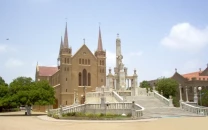
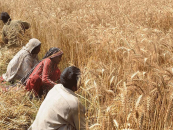
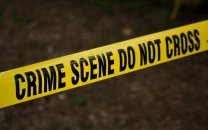
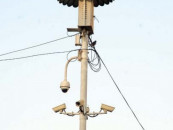
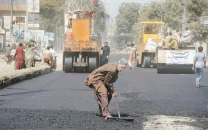













COMMENTS
Comments are moderated and generally will be posted if they are on-topic and not abusive.
For more information, please see our Comments FAQ